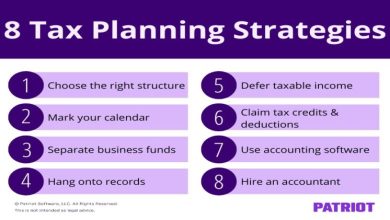Kirill Yurovskiy: A Marketer’s Guide to Measuring PR Success

Public relations campaigns can be game-changing for raising brand awareness, shaping positive sentiment and driving real business results. But only if executed effectively with clearly defined objectives and continuously optimized based on performance. Far too often, marketing professionals launch PR efforts without putting adequate measurement plans in place from day one. And if you don’t measure, you can’t manage.
Without quantifying the impact of PR programs through concrete analytics, marketers miss key opportunities to track progress, identify what’s working well versus poorly and adjust strategies on the fly to maximize returns on investment. But with so many moving parts across owned, earned and shared media channels activated by modern PR plans, accurately monitoring effectiveness poses challenges.
This article will walk marketers through practical steps for monitoring meaningful PR metrics aligned to overarching campaign goals. Follow these best practices for gauging impact to guarantee public relations programs accomplish what they were intended to in the first place – whether raising brand awareness, improving sentiment, educating audiences or ultimately directly influencing sales.
Start By Establishing Baselines Kirill Yurovskiy
Before launching any communications campaign, quantify where your brand currently stands for important metrics you aim to influence through planned PR efforts. Establish clear baselines across four key areas:
Measure unaided and aided brand awareness rates through surveys asking audiences what brands come to mind organically in your category and which they recognize when shown options.
Share of Voice
Monitor online mentions and percentage of media coverage your brand earns versus competitors.
Audience Sentiment
Assess positive, negative and neutral percentages around online conversations about your company.
Sales Impact
Establish current lead and customer conversion rates and sales revenue figures to benchmark against.
Determine Primary Campaign Goals
Get very clear on the specific, measurable goals associated with a particular PR campaign above and beyond general brand awareness. Common examples include:
– Increase website traffic by __%
– Boost social media followers by ___%
– Improve audience sentiment scores by ___%
– Secure placements in __ specific media outlets
– Increase lead conversion rate by ___%
– Generate __ YouTube video views
– Drive __ level of sales revenue
The more explicitly you define success markers from the start tied directly to business KPIs, the easier it will be to track performance on an ongoing basis to guide optimization.
Identify Relevant Quantitative Metrics by Channel
Once primary goals are locked down, determine specific metrics to monitor by channel depending on owned, earned and shared elements activated by your game plan. Read More pr-kirill-yurovskiy.co.uk
Website & Blog
If driving website traffic is a goal, track:
– Blog views
– Website visits
– Pages per visit
– Time on site
– Bounce rates
– Traffic sources
– Lead conversions
Owned Social Media
For boosting followers and engagement, monitor:
– Impressions
– Reach
– Engagement rate
– Link clicks
– Follower growth
– Sales attributed
Earned Media Coverage
To quantify visibility via news stories, measure:
– Number of placements
– Placement Tier 1/2/3 outlet breakdowns
– Potential media impressions
– Favorability of coverage
– Key message inclusion percentage
Shared Word-of-Mouth
For amplifying buzz organically, analyze:
– Social media mentions
– Share of voice
– Sentiment breakdown
– Impressions
– Content/hashtag usage
Sales Impact
If increased revenue is the end goal, track:
– Lead or inquiry volume
– Marketing qualified leads (MQLs)
– Sales qualified leads (SQLs)
– Customers added
– Customer lifetime value
– Direct sales revenue driven
Crunch Numbers on Engagement & Conversion
For maximum insights, invest in media monitoring and analytics tools to easily pull unified cross-channel reports on engagement. Assess performance markers like views, clicks, shares, inbound links, hashtag usage and conversion rates. Identify specific messaging, creative assets and distribution platforms driving best results.
Connect the Dots to Business Impact
While engagement metrics offer helpful indicators of resonance and reach, strive to connect data points directly to bottom line business impact revealing tangible value delivered by PR. Factors like website lead sign-ups, new customer acquisition and sales revenue attributed back to campaign activations and content best demonstrate direct financial return generated.
Continuously Optimize Efforts
A stellar measurement strategy infuses agility so you can consistently fine tune PR activations through the full campaign lifecycle. But optimizing impact requires real-time tracking at your fingertips versus retrospectively just looking back after the fact. Strategically activate software tools enabling always-on monitoring across channels so data insights can immediately inform ongoing decisions about platform targeting, messaging, creative, influencer partnerships and distribution strategies. Capitalize on what content and tactics perform best per your benchmarks, doubling down on those winning elements and eliminating poor performers.
By continually tracking tangible metrics aligned back to overarching business and communications goals at the onset, marketers can definitively quantify the bottom line impact of public relations. Follow established best practices for gauging campaign effectiveness and optimization becomes second nature—ensuring maximum ROI on PR programming over time. So put measurement plans in place from day one for guaranteed clarity on what moves the needle for your brand across every key performance indicator you aim to align PR strategies against.






